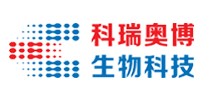产品中心
当前位置:首页>产品中心Anti-STAT1/PE-Cy5.5
货号: bsm-33267M-PE-Cy5.5 基本售价: 2980.0 元 规格: 100ul
产品信息
- 产品编号
- bsm-33267M-PE-Cy5.5
- 英文名称
- Anti-STAT1/PE-Cy5.5
- 中文名称
- PE-Cy5.5标记的信号转导与转录激活因子1单克隆抗体
- 别 名
- signal transducers and activators of transcription 1; DKFZp686B04100; ISGF 3; ISGF-3; Signal transducer and activator of transcription 1 91kDa; Signal transducer and activator of transcription 1 alpha/beta; STAT 1; STAT 91; STAT91; Transcription factor ISGF 3 components p91 p84; ; Transcription factor ISGF-3 components p91/p84; OTTHUMP00000163552; OTTHUMP00000165046; OTTHUMP00000165047; OTTHUMP00000205845; Signal transducer and activator of transcription 1, 91kD; Signal transducer and activator of transcription 1-alpha/beta; Signal Transductor and Activator of Transcription 1; Stat1; STAT1_HUMAN.
- 规格价格
- 100ul/2980元购买 大包装/询价
- 说 明 书
- 100ul
- 研究领域
- 肿瘤 信号转导 转录调节因子 激酶和磷酸酶 表观遗传学
- 抗体来源
- Mouse
- 克隆类型
- Monoclonal
- 克 隆 号
- 10G10
- 交叉反应
- Human, Mouse, Rat, Dog, Pig, Cow, Rabbit, Sheep,
- 产品应用
- ICC=1:50-200 IF=1:50-200
not yet tested in other applications.
optimal dilutions/concentrations should be determined by the end user.
- 分 子 量
- 82kDa
- 性 状
- Lyophilized or Liquid
- 浓 度
- 2mg/1ml
- 免 疫 原
- KLH conjugated synthetic peptide derived from human STAT1
- 亚 型
- IgG
- 纯化方法
- affinity purified by Protein G
- 储 存 液
- Preservative: 15mM Sodium Azide, Constituents: 1% BSA, 0.05M PB, pH 7.5.
- 保存条件
- Store at -20 °C for one year. Avoid repeated freeze/thaw cycles. The lyophilized antibody is stable at room temperature for at least one month and for greater than a year when kept at -20°C. When reconstituted in sterile pH 7.4 0.01M PBS or diluent of antibody the antibody is stable for at least two weeks at 2-4 °C.
- 产品介绍
- background:
The protein encoded by this gene is a member of the STAT protein family. In response to cytokines and growth factors, STAT family members are phosphorylated by the receptor associated kinases, and then form homo- or heterodimers that translocate to the cell nucleus where they act as transcription activators. This protein can be activated by various ligands including interferon-alpha, interferon-gamma, EGF, PDGF and IL6. This protein mediates the expression of a variety of genes, which is thought to be important for cell viability in response to different cell stimuli and pathogens. Two alternatively spliced transcript variants encoding distinct isoforms have been described. [provided by RefSeq, Jul 2008]
Function:
Signal transducer and transcription activator that mediates cellular responses to interferons (IFNs), cytokine KITLG/SCF and other cytokines and growth factors. Following type I IFN (IFN-alpha and IFN-beta) binding to cell surface receptors, signaling via protein kinases leads to activation of Jak kinases (TYK2 and JAK1) and to tyrosine phosphorylation of STAT1 and STAT2. The phosphorylated STATs dimerize, associate with ISGF3G/IRF-9 to form a complex termed ISGF3 transcription factor, that enters the nucleus. ISGF3 binds to the IFN stimulated response element (ISRE) to activate the transcription of interferon stimulated genes, which drive the cell in an antiviral state. In response to type II IFN (IFN-gamma), STAT1 is tyrosine-and serine-phosphorylated. It then forms a homodimer termed IFN-gamma-activated factor (GAF), migrates into the nucleus and binds to the IFN gamma activated sequence (GAS) to drive the expression of the target genes, inducing a cellular antiviral state. Becomes activated in response to KITLG/SCF and KIT signaling. May mediate cellular responses to activated FGFR1, FGFR2, FGFR3 and FGFR4.
Subunit:
Isoform alpha homodimerizes upon IFN-gamma induced phosphorylation. Heterodimer with STAT2 upon IFN-alpha/beta induced phosphorylation. Interacts with NMI. Interacts with Sendai virus C, C, Y1 and Y2 proteins, Nipah virus P, V and W proteins, and rabies virus phosphoprotein preventing activation of ISRE and GAS promoter (By similarity). Interacts with HCV core protein; the interaction results in STAT1 degradation. Interacts with PIAS1; the interaction requires phosphorylation on Ser-727 and inhibits STAT1 activation. Interacts with IFNAR1; the interaction requires the phosphorylation of IFNAR1 at Tyr-466. Interacts with IFNAR2. Interacts with PIAS1 (dimethylated on arginine); the interaction results in release of STAT1 from its target gene. Interacts with SRC. Interacts with ERBB4 (phosphorylated). Interacts with PTK2/FAK1.
Subcellular Location:
Cytoplasm. Nucleus. Note=Translocated into the nucleus upon tyrosine phosphorylation and dimerization, in response to IFN-gamma and signaling by activated FGFR1, FGFR2, FGFR3 or FGFR4.
Post-translational modifications:
Phosphorylated on tyrosine and serine residues in response to a variety of cytokines/growth hormones including IFN-alpha, IFN-gamma, PDGF and EGF. Activated KIT promotes phosphorylation on tyrosine residues and subsequent translocation to the nucleus. Tyrosine phosphorylated in response to constitutively activated FGFR1, FGFR2, FGFR3 and FGFR4. Upon EGF stimulation, phosphorylation on Tyr-701 (lacking in beta form) by JAK1, JAK2 or TYK2 promotes dimerization and subsequent translocation to the nucleus. Growth hormone (GH) activates STAT1 signaling only via JAK2. PHosphorylation on Ser-727 by several kinases including MAPK14, ERK1/2 and CAMKII on IFN-gamma stimulation, regulates STAT1 transcriptional activity. Phosphorylation on Ser-727 promotes sumoylation though increasing interaction with PIAS. Phosphorylation on Ser-727 by PKCdelta induces apoptosis in response to DNA-damaging agents. Phosphorylated on tyrosine residues when PTK2/FAK1 is activated; most likely this is catalyzed by a SRC family kinase.
Sumoylated with SUMO1, SUMO2 and SUMO3. Sumoylation is enhanced by IFN-gamma-induced phosphorylation on Ser-727, and by interaction with PIAS proteins. Enhances the transactivation activity.
ISGylated.
DISEASE:
STAT1 deficiency complete (STAT1D) [MIM:613796]: A disorder characterized by susceptibility to severe mycobacterial and viral infections. Affected individuals can develop disseminated infections and die of viral illness. Note=The disease is caused by mutations affecting the gene represented in this entry.
Mendelian susceptibility to mycobacterial disease (MSMD) [MIM:209950]: This rare condition confers predisposition to illness caused by moderately virulent mycobacterial species, such as Bacillus Calmette-Guerin (BCG) vaccine and environmental non-tuberculous mycobacteria, and by the more virulent Mycobacterium tuberculosis. Other microorganisms rarely cause severe clinical disease in individuals with susceptibility to mycobacterial infections, with the exception of Salmonella which infects less than 50% of these individuals. The pathogenic mechanism underlying MSMD is the impairment of interferon-gamma mediated immunity, whose severity determines the clinical outcome. Some patients die of overwhelming mycobacterial disease with lepromatous-like lesions in early childhood, whereas others develop, later in life, disseminated but curable infections with tuberculoid granulomas. MSMD is a genetically heterogeneous disease with autosomal recessive, autosomal dominant or X-linked inheritance. Note=The disease is caused by mutations affecting the gene represented in this entry.
Familial candidiasis 7 (CANDF7) [MIM:614162]: A primary immunodeficiency disorder with altered immune responses and impaired clearance of fungal infections, selective against Candida. It is characterized by persistent and/or recurrent infections of the skin, nails and mucous membranes caused by organisms of the genus Candida, mainly Candida albicans. Note=The disease is caused by mutations affecting the gene represented in this entry. STAT1 mutations in patients with autosomal dominant candidiasis lead to defective responses of type 1 and type 17 helper T-cells, characterized by reduced production of interferon-alpha, interleukin-17, and interleukin-22. These cytokines are crucial for the antifungal defense of skin and mucosa (PubMed:21714643).
Similarity:
Belongs to the transcription factor STAT family.
Contains 1 SH2 domain.
Database links:
Entrez Gene: 6772 HumanEntrez Gene: 20846 Mouse
Entrez Gene: 25124 Rat
Omim: 600555 Human
SwissProt: P42224 Human
SwissProt: P42225 Mouse
Unigene: 642990 Human
Unigene: 277406 Mouse
Unigene: 33229 Rat
Important Note:
This product as supplied is intended for research use only, not for use in human, therapeutic or diagnostic applications.
转录调节因子(Transcriptin Regulators)
信号转导与转录激活因子1(STAT1)是一种重要的核转录因子,主要位于细胞浆,当细胞受到外界信号刺激时,STAT1发生磷酸化而被激活并转入细胞核参与靶基因的转录调控,参与细胞的信号转导和转录。

